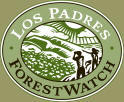|
Livestock Grazing on
Public Lands
Livestock grazing affects
more acres than any other activity on our Western public lands. In fact, grazing has degraded or destroyed over 700 million
acres of Western grasslands. Because these impacts are so
widespread, grazing has been called the single most pervasive
and damaging activity on Western public lands.
Cattle
waste pollutes water sources, and livestock is the greatest
non-point source polluter of water in the West. Livestock
grazing is also the single greatest cause of biodiversity loss,
and the greatest threat to endangered and threatened species. In fact, grazing on public lands has resulted in the listing of
90 endangered and threatened species across the nation. Not
only do livestock consume large amounts of native grasses, but
they also trample the soil and microbiotic crusts, resulting in
increased erosion and soil compaction, increased runoff,
flooding, and the decline of soil nutrients. Livestock also promote the spread of invasive weeds, and destroy
streamside vegetation.
Grazing on the Los Padres
The LPNF
supports over 860,000 acres of grazing and has the third-highest
number of grazing allotments in the state of California. Because the LPNF has more sensitive species than any other
national forest in California, livestock grazing is becoming
increasingly incompatible with species preservation.
Unfortunately, the Forest Service allows grazing to continue in
sensitive areas, including along the Big Sur coastline, pristine
wilderness areas, and habitats of sensitive species such as the
red-legged frog, steelhead, and the Smith’s Blue Butterfly.
Over half (57) of the grazing allotments in the Los Padres occur
in wilderness areas, consuming over 120,000 acres of wilderness
lands. In addition, livestock grazing has damaged and destroyed
several local sites of cultural significance to Native
Americans.
The
Forest Service is not doing everything it can to reduce these
impacts. In fact, a recent study found that most (78%) of the
grazing allotments on the LPNF have not even been studied
for their environmental impacts as required by the National
Environmental Policy Act. This is the highest noncompliance
rate of
all 18 national forests in California.
Voluntary Grazing Buyout
Public
lands livestock grazing is directly subsidized by our taxpayer
dollars. The federal government pays $500 million every year to
support grazing on our public lands. This is because the
government charges only $1.75 per cow per month, while the true
market rate on private lands is over $10.00 per cow per month.
There are
varied solutions to reduce or eliminate the economic and
environmental impacts of public lands livestock grazing. Some organizations are working to end public lands grazing
completely, maintaining that it creates too many conflicts with
other uses of public lands. Other groups are pursuing
legislation that would compensate ranchers for voluntarily
retiring their grazing permits in favor of wildlife and
watershed values.
|

